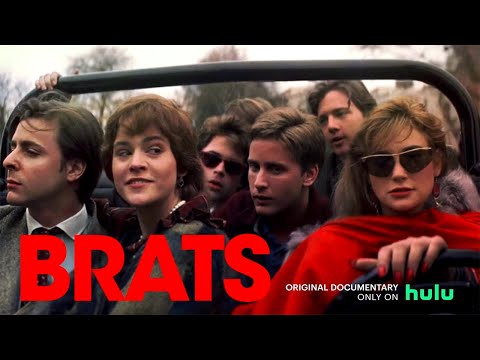Jon Cryer and Andrew McCarthy did not shy away from discussing the longtime animosity that came along with the glaring spotlight of being young Brat Pack actors. And the two recently shared how they finally buried the hatchet as adults.
“When we had done ‘Pretty in Pink’ together, we did not get along because he was a d—,” Cryer said Friday at a screening for McCarthy’s new documentary, “Brats.”
“That’s very true,” McCarthy said during the Q&A, according to People.
The actors, who co-starred in the 1986 movie written by John Hughes, apparently spent years on each other’s bad side, not unlike their high-school characters Duckie and Blane, who both harbored feelings for Molly Ringwald’s Andie.
Cryer, 59, who went on to win two Emmys for “Two and a Half Men,” said a fateful 2012 meeting in a greenroom for “The View” helped them make amends. McCarthy, 61, who went on to direct in TV and film, confirmed that he apologized to his former co-star, and Cryer described it as “a lovely moment.”
“It was lovely because it was like within a moment, it was just so clear that we were teenagers and that does not, that in no way defines who we are now and it was just so lovely. It was immediately warm,” Cryer said.
Cryer, McCarthy and several other members of the Brat Pack reunited Friday at the “Brats” world premiere in New York. The actors appear in the new documentary about what it meant to be part of that group, which got its sensational sobriquet from a 1985 profile about Emilio Estevez. The actors — billed as Hollywood’s Brat Pack by writer David Blum — starred in the 1980s movies “St. Elmo’s Fire,” “The Breakfast Club,” “Sixteen Candles” and “About Last Night,” among others.
McCarthy managed to get Cryer — whom he described as “Brat Pack adjacent” — Estevez, Demi Moore, Ally Sheedy, Rob Lowe and Lea Thompson to sit for interviews for the doc, which begins streaming Wednesday on Hulu. (Other members of the famed clique include Judd Nelson, Sean Penn, Tom Cruise, Timothy Hutton, Matt Dillon and Nicolas Cage, with Matthew Broderick, Matthew Modine and Kevin Bacon on the side.) Blum is also interviewed in the film, which is based on McCarthy’s 2021 memoir “Brat: An ‘80s Story.”
“If you were coming of age in the 1980s,” McCarthy says in the “Brats” trailer, “the Brat Pack was near the center of your cultural awareness. But for those of us experiencing it from the inside, the Brat Pack was something very different.”
“The Resident” and “Good Girls” actor laments how his career and those of his cohort were “branded” by that 1985 New York Magazine article, leading him to hate the Brat Pack for decades.
Appearing Monday on “Good Morning America,” McCarthy said he used the documentary as “an opportunity to re-connect with the old gang,” most of whom he hadn’t seen in more than 30 years, and discuss the infamous moniker and its professional ramifications. While the public embraced the group, the industry reacted to them negatively.
“It was such a seminal moment in all our lives, and none of us had ever talked about it before. So I thought it’d be good to go see what everybody felt about it,” he said. “It was such a crazy thing when it first happened to us, we all hated it, and over time it’s become this wonderfully iconic, affectionate term. I just wanted to see what everybody’s relationship to it was, because it is like a relationship. It’s followed me, every day I hear it. “
The “Weekend at Bernie’s” star said he hadn’t seen several members of the pack for years, let alone hung out with them. He was surprised that his co-stars were willing to talk about the moniker, suggesting that even 10 years ago, they probably wouldn’t have readily discussed it.
McCarthy, who described himself as a “loner,” said he last saw Lowe about 30 years ago and Estevez at the 1985 premiere of “St. Elmo’s Fire.”
“Our lives just led elsewhere. Because the Brat Pack, what initially happened was we perceived it as such a negative thing, we all kind of scattered,” he said. “By the naming of it, it kind of ended it in a certain way, and then the public knew better and embraced it and just took it to their hearts, and it took on a life of its own.”


